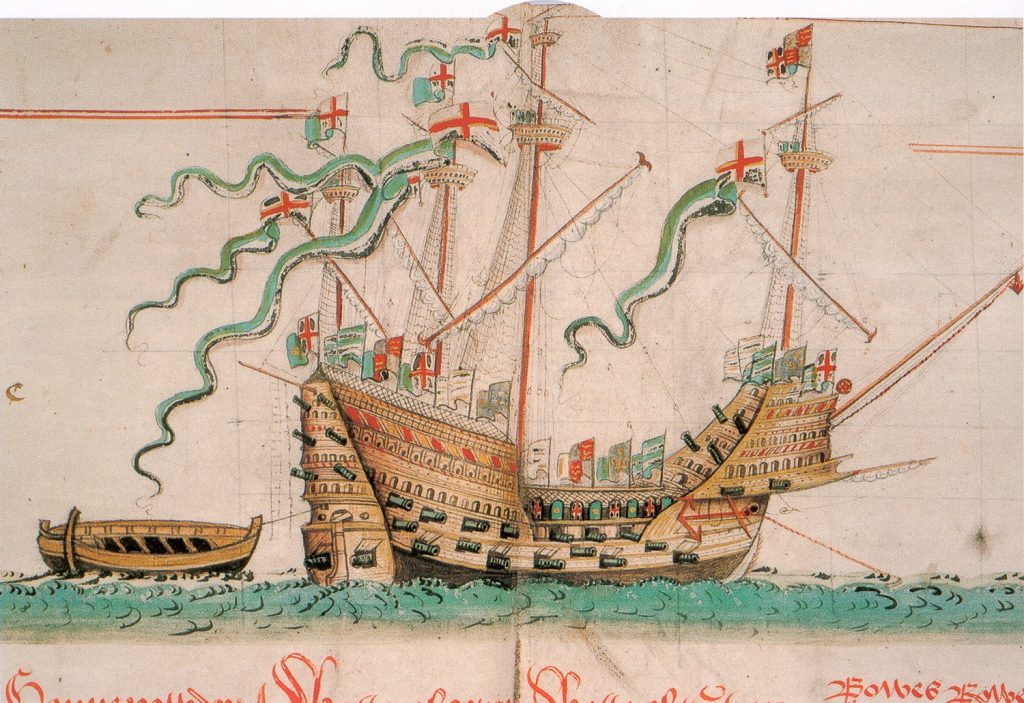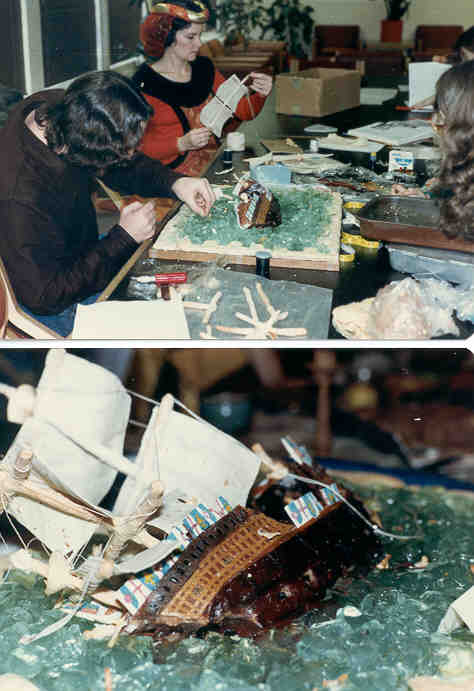The Mary Rose, King Henry VIII’s pride of the fleet, sank in the Solent in southern England during a sea battle with the French in 1545. The wreck was discovered in the mud under the Solent water in 1971 and excavated starting in 1979. In 1982 a section of the hull was excavated and raised from the seabed in a special cradle. The effort was covered by US media and National Geographic Magazine, and members of the Culinary Guild read the reports with great interest.

In October 1980 the event stewards of the approaching SCA event, Twelfth Night Coronation Celebration, announced that there would be a subtlety contest held at the event. A “subtlety” in European medieval and Renaissance cuisine was a work of art constructed with food, served between the courses of a banquet to amaze, amuse or educate, often edible but sometimes not edible. The minutes from an early October meeting recorded our interest in attempting our first amazing food spectacle. “We talked about subtleties and the 12th Night subtlety contest.” After tossing around some ideas, the notes show that we settled on a concept inspired by recent news. “A ship in full sail. We are going to do a reproduction of the sinking of the Mary Rose….Next meeting we will refine our idea.”
At the next meeting, results of early materials testing were reported. “Rowenna experimented with filo dough for sails and they lasted only 25 minutes, then crumbled. Anne takes out some fruit leather… this would work well.” People at the meeting volunteered to work on ideas for edible materials and more brainstorming took place. The notes for the meeting end with, “Everyone will dream tonight of little tiny sailors and little tiny ropes and little tiny sails and little tiny nautical things.”
Everyone wanted the subtlety to be – in theory, at least – entirely edible. Twelfth Night that year took place in the Barony of Lions Gate (Vancouver, British Columbia). The parts for the subtlety were made on Friday and transported 120 miles, to be assembled at the event. The subtlety, by that time being called a scenario, was arranged on a large wooden tray. The ship itself was made of steamed suet pudding carved into the shape of the ship’s hull, with planking and decking made of fruit leather, masts made of breadsticks, small sailor drowning victims made of dried apple with faces and clothes painted on, and some nautical details that were not edible, such as flags, tiny cannons, and ropes. After much experimentation, tortillas were chosen as the material for sails. The sea was made of thick gelatin that stood up in waves, tinted pale green. The entry included an explanation of the scenario, written in a fine calligraphy hand by Baron Theodulf.

Luckily the ship was supposed to be sinking, because at room temperature the steamed pudding hull melted into the gelatin sea in a very realistic way.
At the mid-January meeting, the guild head asked that it be recorded in the minutes that the Guild won the subtlety contest at Twelfth Night.